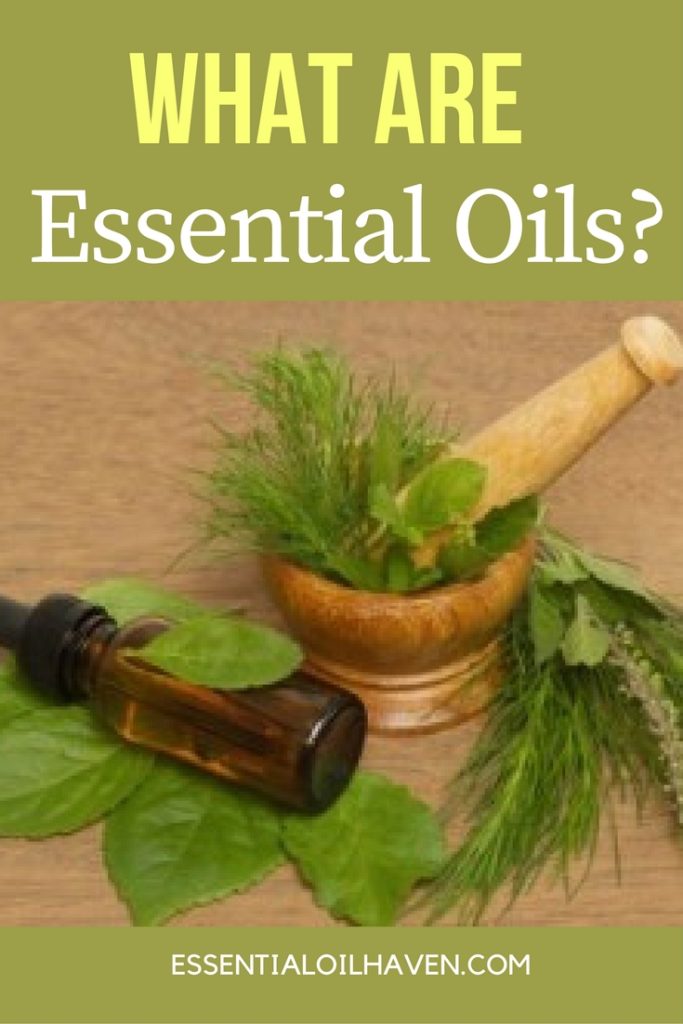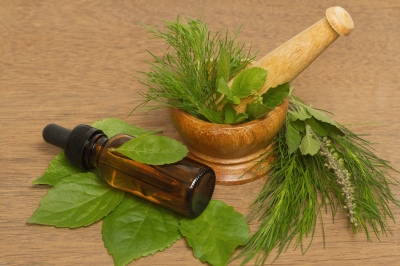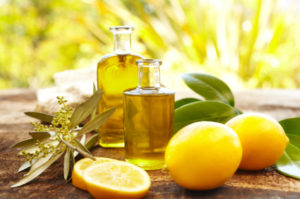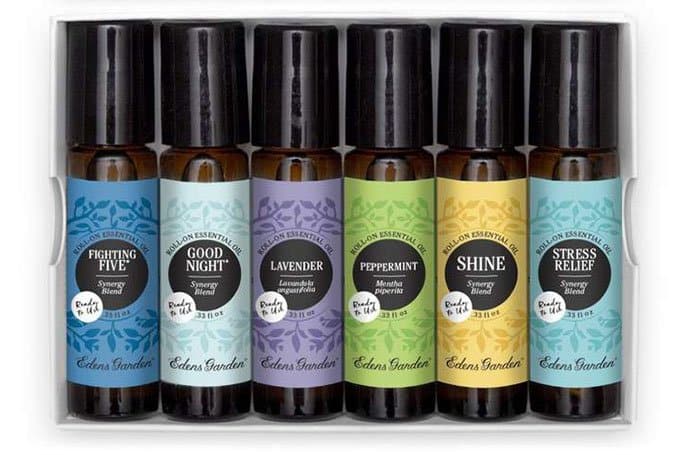
Essential oils introduction
If you’ve been asking yourself “What are essential oils?”, let me give you a brief overview and introduction of essential oils for beginners.
Essential oils are the highly concentrated version of the natural oils in plants.
This post contains affiliate links, which means if you make a purchase through these links, I may receive a small commission at no extra cost to you. Read my full disclosure policy here.
Getting essential oils from plants is done with a process called distillation, most commonly distillation by steam or water, where many parts of the plants are being used, including the plant roots, leaves, stems, flowers, or bark.
After distillation, the outcome is a highly concentrated portion of essential oil, which will have the characteristic fragrance and properties of the plant from which it was extracted, and contain the true essence of the plant it came from. This includes the smell, but also the plant’s healing properties and other plant characteristics.
You can see how this highly potent extract of a plant or herb can be extremely useful for many purposes.
- Do Essential Oils have Therapeutic Benefits?
- What Makes an Essential Oil a “Therapeutic Grade” Oil?
- What is a “100% Pure” Oil?
- How to Get Started with Essential Oils
- Are Essential Oils the same as Fragrances or Aromatic Oils?
- Should I Get Single Essential Oils or an Essential Oil Blend?
- Where Can I Buy Essential Oils?
- The Science and Cultural History of Essential Oils
Do Essential Oils have Therapeutic Benefits?
Essential oils have been used throughout history in many cultures for their medicinal and therapeutic benefits.
While the oils are still in the plant, they provide the plants with protection against predators and disease, and also play a role in plant pollination. As these properties carry forward into the essential oils, folk medicine since ancient times has made use of essential oils in medicinal practices.
This knowledge is also still widely used today. Modern scientific studies and trends lean again towards more holistic approaches to wellness and a revival of essential oils for physical and psychological health and well-being applications.
The most common therapeutic application of essential oils is that of aromatherapy, where healing effects are achieved through the aromas of the essential oils. Many essential oils are believed to have an uplifting effect on the human’s mind; and many essential oils also have antiseptic properties, which means they reduce the possibility of infection when applied to the human skin.
Four favorites of essential oils for therapeutic benefits have been identified as:
- Lavender – helps to alleviate stress, anxiety, irritability mental fatigue, panic attacks and depression, but also good for bruises and stretch marks.
- Peppermint – helps with nausea, vertigo, and exhaustion and also good for headaches.
- Frankincense – used for immune system stimulation and to help with asthma, coughing and bronchitis.
- Tea Tree – disinfecting and good for skin blemishes and acne.
This little example list is by no means exhaustive and the therapeutic uses and applications for essential oils go on and on, which is well beyond the scope of this initial introduction.
What Makes an Essential Oil a “Therapeutic Grade” Oil?

Essential oils are the highly concentrated version of the natural oils in plants.
In fact, there is no official grading system in place that makes any one oil a “therapeutic grade oil”, and another one not. Any company can technically call their oils “therapeutic grade” as the term is simply used solely for marketing purposes. No 3rd party certification office or institution exists to stamp or ensure that these terms are used properly and really only for situations where in fact the oils are pure, complete and unadulterated. If the oils are sourced and distilled properly, all aromatherapy oils should still contain all of their therapeutic benefits that come inherent with the source of that plant.
Some essential oil companies even go as far as creating their own, internally certified standard, to further get around this fact. doTerra is one of those companies that came up with their own, trademarked name, “Certified Pure Therapeutic Grade®”, which is really only certified by their own internal standards – not an industry-wide one or one that you could cross-compare from one company to another. This is not to say that their oils aren’t good, it just goes to show that smart marketing and good trademarking can really confuse the facts of the matter here.
Don’t get hung up looking for this label, or any other marketing term, as it actually doesn’t properly distinguish a quality brand from a lower-quality product – it’s just marketing.
What is a “100% Pure” Oil?
In my experience, the term “pure” has been used almost as a replacement for “single” essential oil. This means that pure essential oils are single oils (such as Lavender, Tea Tree, Rosemary, etc.) – and not a blend or synergy mix of aromatherapy oils.
A 100% pure essential oil means that you’re purchasing just that oil, and not an essential oil blend or a bottle that has oil blended together with carrier oils or other additives. I would go as far to say that “100% pure” wouldn’t be advertised for oils that could possibly contain additives, fillers, or chemical aromas.
However, companies might walk the fine line and call their single oils “pure oils” (without the 100% part), and possibly have some fillers or other chemical substances mixed into their oils. Who knows! Again, there is no 3rd party that polices this term, so it should on its own also not be your sole criteria for trusting any essential oil brand of choice. The only real way to know whether or not any essential oil bottle (or company) is trustworthy, consistent and accurate in their sales and advertising, is to go as far as looking at chemical test results of oil batches and bottles, and pick a brand that readily discloses this information for the public to see (my favorite brand that does just this, is Plant Therapy).
I always think the more information a brand discloses to educate their consumers, the more trustworthy they become in my eyes.
How to Get Started with Essential Oils
Quick Start Guide
I have compiled a lot of information on my website. Here is a selection of articles (in addition to this page), that will help you get started with essential oils:
- How to use essential oils
- Choosing a starter kit
- The best essential oil diffusers under $40
- Essential oil storage tips
- Essential oils price comparison chart
- Blending essential oils
- Essential oils dilution guide
- Carrier oils
- Hydrosols
- Understanding essential oil diffusers
Are Essential Oils the same as Fragrances or Aromatic Oils?
Essential oils are not the same as perfume or fragrance oils, which are also called aromatic oils or aroma oils. Perfume oils are artificially created in a chemist’s lab, while essential oils are a product of nature.
Fragrances are made to mimic an otherwise natural smell (such as “spring rain” fragrances). Of course, the synthetically created fragrance products do not offer the therapeutic benefits that the actual essential oils offer. Only pure essential oils should be used for aromatherapy purposes.
However, fragrance oils do have their place and applications. They are widely available and quite inexpensive to obtain, and are commonly used in soap making, candle making, or perfumes and cosmetics.
Should I Get Single Essential Oils or an Essential Oil Blend?
Essential oils can be purchased in their pure, single versions, or as a blend of several essential oils. Single essential oils are best chosen if you are after a specific aroma or health benefit of that particular plant. A lot of popular essential oils are available in their pure versions.
Essential oil blends are great because they have been specifically designed to achieve a certain purpose, such as “Peace & Calming”, “Joy”, or “Breathe”. You may also be able to get blends in ready-to-use roll-on bottles, which can be extremely handy for on-the-go use when you don’t have a diffuser ready.
Purchasing a blend can also save you from having to buy every essential oil in that blend individually, plus then also learn how to blend essential oils together.
The disadvantage of oil blends though, is that you have no control of what goes into that exact blend. You may not like a certain sub-note or smell that has been used within that blend, but you may still like to achieve its end effect.
You also cannot use a pre-made essential oil blend to reliably further mix it with other oils.
Therefore, most essential oil starter kits come with a selection of pure essential oils along with a few ready-made essential oil blends to get you started and so you can try out what works best for you.
Where Can I Buy Essential Oils?
Essential oils vary greatly in quality and price. Reasons for this include the rarity of the plant being used, the plant’s growing/climate conditions, the country of origin of the botanical, and the quality standards, processes and procedures of the distiller or manufacturer of the essential oils.
Oils are mostly sold in sizes of 5 ml – 20 ml glass bottles. The dark or amber shading of the glass helps absorb outside light and keep the essential oil at its best natural state.
Here are ten of the most popular and best essential oil brands, in no particular order:
- Young Living Essential Oils
- doTerra Essential Oils
- Edens Garden Essential Oils
- Mountain Rose Herbs Essential Oils
- Plant Therapy Essential Oils
- REVIVE Essential Oils
- Rocky Mountain Essential Oils
- Aura Cacia Essential Oils
- Simply Earth
- Now Essential Oils
If you’d like to know more about any one of those oil brands, just click on the link with the name. It will get you to a full company review about that particular oil brand. In this list, I have included only essential oil brands that I have personally tested so if you have any questions about them, you can send in a comment below and I’ll be able to help you with an answer.
The Science and Cultural History of Essential Oils
One of my website author friends, Kevin Curran of the EthnoHerbalist.com, teaches cell biology and ethnobotany in San Diego. He wrote an excellent summary covering the cultural history and biology behind various applications of essential oils: in aromatherapy, pharmacology and household cleaning. Most intriguingly, the question is posed of “Why does a plant invest so much energy to produce its essential oils in the first place?” Basically, it’s because their internal biochemistry is what keeps them alive, protects them, benefits them, and heals them when they’re harmed or struggle with environmental challenges. It’s a beautiful angle and really led me to think deeply again, and once more honor the beautiful work these plants do for us to benefit from. Read his full article here.
Further Reading
Essential Oil Info on Wikipedia
What do you think?
Was this information helpful to you? What do you think about essential oils? Join us on our Facebook page to discuss!
Image courtesy of Praisaeng at FreeDigitalPhotos.net



